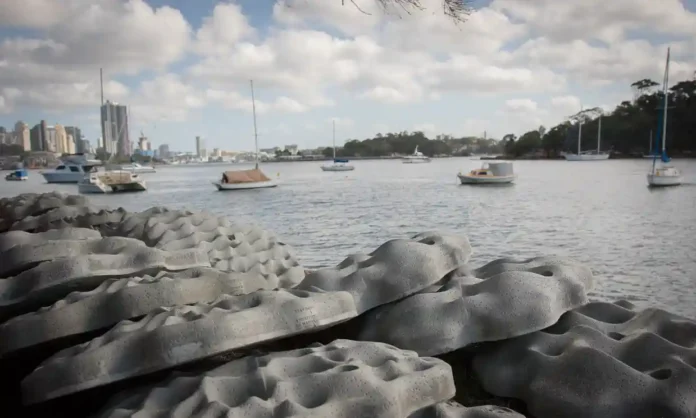The NSW government will plant kelp forests and install hundreds of living sea walls across Sydney Harbour in a bid to repair damage caused by decades of rapid urbanisation.
NSW environment minister James Griffin said the initiative will boost biodiversity and improve water quality and carbon storage.
Marine ecologist and co-lead of the project, Katie Dafforn, said the living sea walls are made from 3D print moulds cast with concrete and placed on to existing sea walls.
Dr Dafforn said the concrete slabs are designed in ways that make it easy for marine life to attach on and include “all sorts of habitat features”.
Aaron Eger, program director at the Kelp Forest Alliance, said harbour infrastructure is often smooth or featureless, making it difficult for small surface-dwelling organisms to take hold.
“You can think of trying to walk on ice – it’s very slippery,” he said.
“The idea behind a living seawall is to add texture and shape and form … to support easier attachment for barnacles and mussels, and that in itself would bring in additional life.
“That can create habitat, places for animals to hide or to grow and be protected.”

Analysis:
This isn’t 3D printed concrete, but it’s 3D printing and concrete. Most importantly, it is a unique and interesting use of 3D concrete forms. I hadn’t previously considered marine applications of organic concrete forms. Another notable aspect of this story is the example of artificial structures made to be host to living organisms. l saw this concept in play in a different example with plants integrated into structures. Here, they specifically take advantage of concretes texture to make a more suitable home for marine life. Are there other contexts in which the surface texture of 3D-printed concrete could be advantageous?




